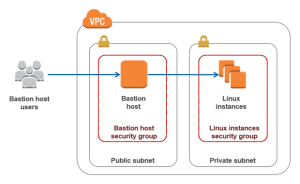
A JSON Web Token (JWT) is a compact, URL-safe means of representing claims to be transferred between parties as a JSON object. This information can be verified and trusted because it is digitally signed. JWTs can be signed using a secret (with the HMAC algorithm) or a public/private key pair using RSA or ECDSA.
JWTs are useful for a variety of purposes, including:
- Authentication: JWTs can be used to authenticate users and grant them access to resources.
- Authorization: JWTs can be used to authorize users to perform specific actions on resources.
- Information exchange: JWTs can be used to securely exchange information between parties.
- Single sign-on: JWTs can be used to enable single sign-on (SSO) across multiple applications.
JWTs are a popular choice for authentication and authorization because they are lightweight, easy to use, and secure. They are also supported by a wide range of frameworks and libraries.
Here is an example of a JWT:
eyJhbGciOiJIUzI1NiIsInR5cCI6IkpXVCJ9.eyJzdWIiOiIxMjMiLCJleHAiOjE1MDMwMDAwMDAsImlhdCI6MTU0MDMwMDAwMH0.a2V5Y2hlc3QtMSJ9
This JWT contains three parts:
- Header: The header contains information about the JWT, such as the type of token (JWT) and the algorithm used to sign it (HMACSHA256).
- Payload: The payload contains the claims, which are the actual data that is being transferred. In this case, the claim is a username.
- Signature: The signature is used to verify the authenticity of the JWT. It is created by signing the header and payload with the private key.
When a JWT is received, the recipient can verify the signature to ensure that the token is authentic and has not been tampered with. They can then extract the claims from the payload to access the data that is being transferred.
JWTs are a powerful tool that can be used for a variety of purposes. They are lightweight, easy to use, and secure. If you are looking for a way to authenticate and authorize users or to securely exchange information, JWTs are a great option.
JSON Web Token (JWT) is an open standard for securely transmitting information between parties as a JSON object. It is a compact, URL-safe means of representing claims between two parties, typically used for authentication and authorization purposes.
A JWT consists of three parts: a header, a payload, and a signature. The header contains metadata about the token, such as the algorithm used for signing it. The payload contains the claims or statements about the user or entity being authenticated. These claims can include information such as the user’s identity, permissions, and expiration time. The signature is created by signing the encoded header and payload using a secret key or private key, ensuring the integrity and authenticity of the token.
JWTs are commonly used in modern web applications as a way to authenticate and authorize users. When a user logs in, the server generates a JWT and sends it back to the client. The client then includes the JWT in subsequent requests, typically in the Authorization header, to authenticate and gain access to protected resources. The server can verify the authenticity of the JWT by validating its signature and checking the claims within the payload.
One of the main advantages of JWTs is that they are stateless, meaning the server does not need to store session information for each user. This scalability makes JWTs suitable for distributed systems and microservices architectures. Additionally, JWTs can be easily shared between different services or systems since they are self-contained and carry all the necessary information within the token itself.
However, it’s crucial to ensure the security of JWTs to prevent unauthorized access or tampering. This includes securely storing and managing the secret or private key used for signing, validating the token’s signature, and carefully defining and validating the claims within the payload to prevent unauthorized modifications.
Overall, JWTs provide a flexible and secure method for authentication and authorization in web applications, enabling the exchange of trusted information between parties in a stateless manner.
JSON Web Token (JWT) example
Here’s an example of a JSON Web Token (JWT):
eyJhbGciOiJIUzI1NiIsInR5cCI6IkpXVCJ9.eyJzdWIiOiIxMjM0NTY3ODkwIiwibmFtZSI6IkpvaG4gRG9lIiwiaWF0IjoxNTE2MjM5MDIyfQ.SflKxwRJSMeKKF2QT4fwpMeJf36POk6yJV_adQssw5c
This JWT consists of three parts separated by dots:
- Header: eyJhbGciOiJIUzI1NiIsInR5cCI6IkpXVCJ9
- The header specifies the algorithm used for signing the token, in this case, “HS256” (HMAC with SHA-256).
- Payload: eyJzdWIiOiIxMjM0NTY3ODkwIiwibmFtZSI6IkpvaG4gRG9lIiwiaWF0IjoxNTE2MjM5MDIyfQ
- The payload contains the claims or statements about the user or entity. In this example, the payload includes the “sub” claim (subject) with a value of “1234567890”, the “name” claim with a value of “John Doe”, and the “iat” claim (issued at) with a value of 1516239022.
- Signature: SflKxwRJSMeKKF2QT4fwpMeJf36POk6yJV_adQssw5c
- The signature is generated by signing the encoded header and payload using a secret key. It ensures the integrity and authenticity of the token.
To validate the JWT, the recipient would need to have the secret key used to sign the token. They can verify the signature by re-computing it using the same algorithm and secret key. If the recalculated signature matches the one in the JWT, the token is considered valid.
Please note that the example provided is a simplified representation. In practice, JWTs can contain additional claims and can be used for various purposes, such as authentication, authorization, and information exchange between systems.





